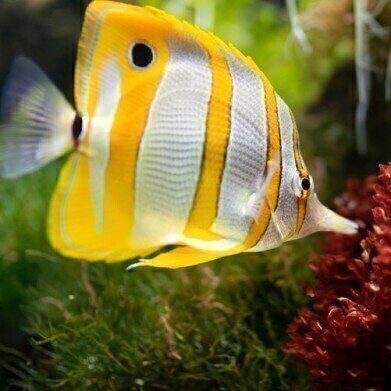HPLC, UHPLC
What Should You Be Feeding Your Fish? - Chromatography Explores
Dec 31 2018
High performance liquid chromatography (HPLC) is renowned as one of the gold-standards in analytical techniques. A technique that uses the same principles an 8-year-old would use to separate the colours of inks in a classroom - is regularly used to in laboratories all over the world to investigate new drugs, analyse the purity of pharmaceuticals and authenticate whisky.
A recent article published in the Journal of Aquaculture Research and Development has highlighted the versatility of the technique - this time in helping to make healthier fish food. In the article ‘HPLC Profile of Medicinal Plant Extracts and its Application in Aquaculture’, a team from the Shri Andal Alagar College of Engineering in Tamil Nadu, India used HPLC to study the medicated proteins from medicinal plants and how they might help kill fish pathogens in water.
Studying medicinal plant proteins
The team studied three medicinal plants - Leucas aspera, Achyranthes splendens and Swertia chirayita. Taking 1g samples, they macerated them and mixed with a buffer before centrifuging for 20 minutes. The supernatant was collected, and the extraction process repeated several times before the final supernatant was made to 50ml with a phosphate buffer. TCA was added and after incubation and centrifuging a pellet was formed which was dissolved in sodium hydroxide.
HPLC was used to analyse the proteins in the sample. Developing methods on different HPLC columns is the subject of the article, Using Different HPLC Column Chemistries To Maximise Selectivity For Method Development. The team report that:
To isolate and purify the plant-based products like secondary metabolites and proteins HPLC is highly useful for researchers and industrialists those who focus on quality.
Home-made fish pellets provide the protein
The second part of the work that the team from Tamil Nadu, India carried out was to compare fish food pellets made from medicinal plants with commercial varieties and to see if they would be effective in fighting fish pathogens in the water. They did this by preparing fish pellets containing various ratios of the medicinal plants discussed earlier with fish wastes with Aloe Vera as a binding agent.
The fish pathogens they tested the food on included Staphylococcus aureus, Staphylococcus epidermidis, Escherichia coli and Pseudomonas species - the bacteria that cause most of the diseases in aquaculture. The tests that the team carried out confirmed that the pellets produced from the medicinal plants would be viable for antimicrobial treatment when used as a fish feed.
Herbal remedies - not just for humans.
Digital Edition
Chromatography Today - Buyers' Guide 2022
October 2023
In This Edition Modern & Practical Applications - Accelerating ADC Development with Mass Spectrometry - Implementing High-Resolution Ion Mobility into Peptide Mapping Workflows Chromatogr...
View all digital editions
Events
Apr 28 2024 Montreal, Quebec, Canada
May 05 2024 Seville, Spain
May 15 2024 Birmingham, UK
May 19 2024 Brno, Czech Republic
May 21 2024 Lagos, Nigeria














